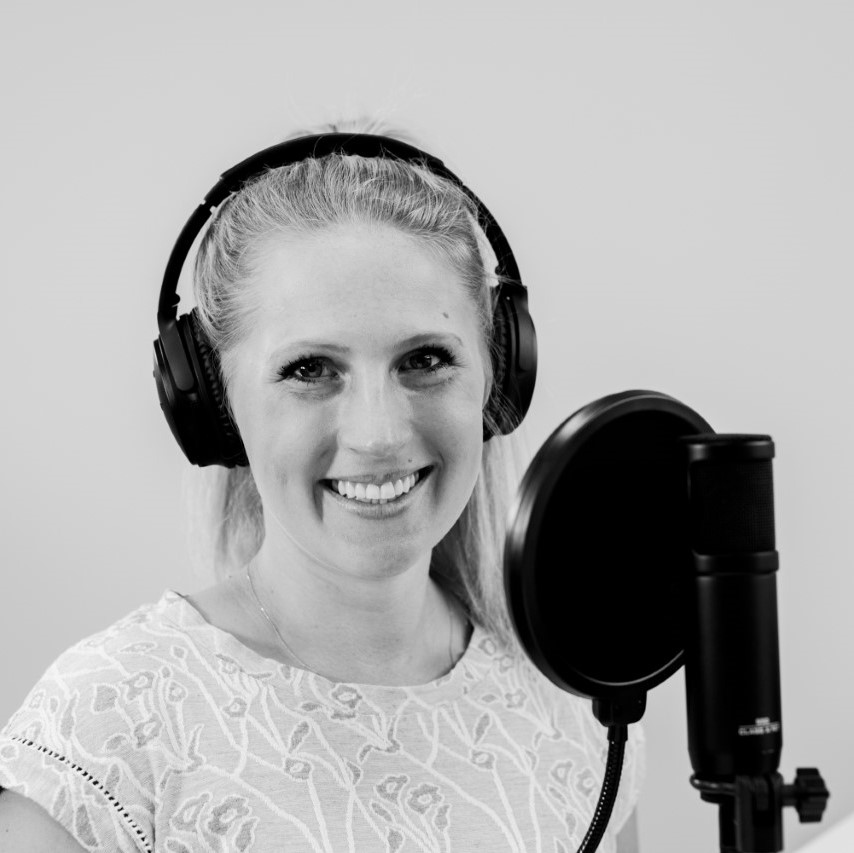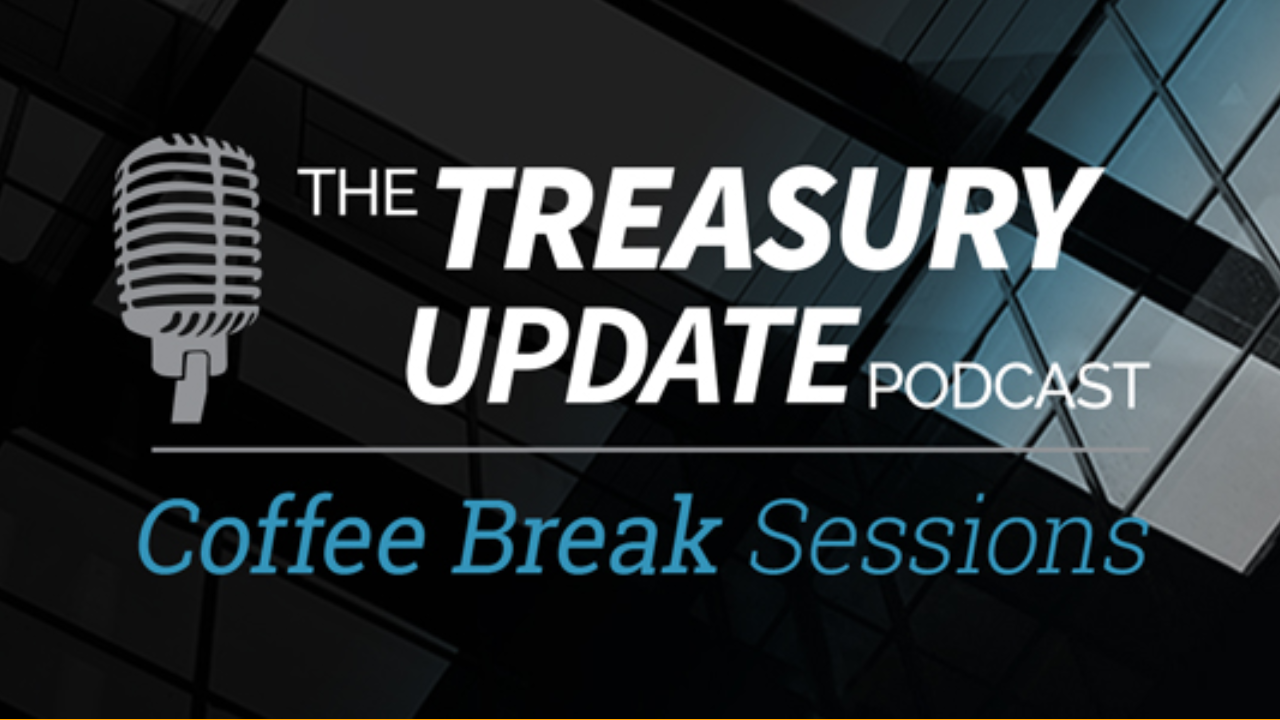
Session 17
What is Common Payment Types?
What are common payment types? Coffee Break Session Host Alexa Cook talks with Stephanie Villatoro, Senior Consultant at Strategic Treasurer, to discuss the foundational elements of common payment types. They cover how these payment types have changed over the last few decades, the various shifts taking place across the corporate’s use of them today, and more. Tune in to this bite-size conversation to learn more.
Host:
Alexa Cook, Strategic Treasurer


Speaker:
Stephanie Villatoro, Strategic Treasurer


Episode Transcription - CBS Episode 17: What are Common Payment Types?
Alexa Cook:
Hey guys, welcome to the Treasury Update Podcast, Coffee Break Session, the show where we cover foundational treasury topics and questions in about the same amount of time it takes you to drink your coffee.
Alexa Cook:
This is Alexa Cook, your host, and today I am joined with Stephanie Villatoro with Consultants at Strategic Treasure. Welcome, Stephanie.
Stephanie Villatoro:
Thank you, Alexa. It’s a pleasure to be here.
Alexa Cook:
I’m excited today. We’re going to talk about what are some of the common payment types that we see in business. So, Stephanie, what are some of the common payments or payment types used?
Stephanie Villatoro:
Well, when you’re talking about corporate payments, there are three basic payment types that are used in the majority, which are checks, ACH, and wires.
Alexa Cook:
Okay. Do you maybe want to give a bit of detail on each of those three? So let’s start with checks.
Stephanie Villatoro:
Certainly. So checks, those are your typical paper check. People utilize those still today for vendor payments. Very rarely do you see it more with payroll anymore because that has moved more into the ACH world, but it’s your standard check payment. ACH is your automated clearing house payments. These are electronic payment types that are typically next day, and they can be done in any amount of time for one day, two day, three day value dates. These are typically what you see with payroll, so your ACH credits that corporations are paying their payrolls with. They are revocable, meaning that they can be reversed and the rules are different from a consumer versus a corporate on the times of that. Corporations only have a few days to reverse an ACH, whereas consumers have up to, I think, 30 days. And then the last type is wires, which are irrevocable. They are final payments. They’re usually done for a large amount where ACH is more your smaller dollar payments that are in bulk.
Alexa Cook:
Are there any costs associated with any of those three payment types, whether it’s sending or receiving?
Stephanie Villatoro:
Yeah. So with a wire sending a wire, it’s typically in the $15 to $25 range. So you’re thinking of from a total cost standpoint, it’s a little bit on the expensive side, but they’re utilized for those needs when you want something that’s not revocable, meaning you can’t be returned, so for the finality of that. These are usually for legal settlements and the such or same-day needs for cash funding.
Stephanie Villatoro:
With an ACH, it’s a much cheaper option. When you’re thinking of electronic payments, these are your bulk payments for vendor payments, for payroll where you’re making a lot of transactions in a batch format, so a file transmission to your bank with a lot of payments in it. They’re usually lower value and the cost is in the cents, like less than 50 cents, less than 30 cents per transaction when you’re thinking of all-in cost with the file transmission cost versus the receipt cost.
Stephanie Villatoro:
And then checks. Everyone seems to think checks are cheaper, but they’re really not. When you look at the total cost of a check, I think the average cost for a check payment from beginning to end of a process, and you’re thinking people actually printing and stuffing envelopes as well, it’s over $12 per check. So when you’re thinking of the three different options there, check you think it would be the cheapest for the transaction, which on your statement it may only cost 10 cents to clear a check, but when you’re looking at that all-in cost it’s much more expensive.
Alexa Cook:
So I think you kind of alluded to it that the most common was maybe ACHs, but has that always been the case or were there any shifts in the past couple of decades? Do you maybe want to expand on that?
Stephanie Villatoro:
So ACH has not been around as long as checks. It’s taken many, many years for those to pick up. And if you look at the check volume from, and the ACH volumes just in 1993 now, many, many years before that check topped over ACH as it was taking on its popularity in a payment type. But in ’93, so we’ll do it in the last few decades here, check was only at 168 million checks per year in that year that had cleared through the Federal Reserve where ACH was 2.1 billion. Now, many years before that it was a lot less. But in ’19, 2019, so just last year, so we had checks at 168 million. Now they’re down to 27 million. So that’s a huge decline in checks over the last few decades.
Alexa Cook:
That’s a major decline. Yeah.
Stephanie Villatoro:
And then ACHs went from 2.1 billion to 24.7 billion. So that’s a huge increase. So if you’re looking that up on a line graph, one is definitely dramatically decreasing and the other’s dramatically increasing. So that’s the shift, going to more cheaper and more electronic payment types.
Alexa Cook:
What are companies doing to support these changes from one payment type to another?
Stephanie Villatoro:
On the payment side, because we were talking about actual outgoing payments, companies are doing some different things. So some it’s just a natural progression of companies wanting to receive an electronic payment and others still wanting to have that paper check, that physical paper check. And I think that’s, in this environment today with COVID going on, I think I see a lot less people. People are trying to switch this a lot faster right now because they don’t want that paper check in the mail.
Stephanie Villatoro:
What they’re doing is, so there’s that natural progression, but on top of that when they’re trying to convert over and companies are taking an active role in moving from paper to electronic to kind of get out of the paper business, they start doing different projects, I would say, to have that move for their vendor payments or payroll, they’re moving those over in a very methodical way. They’re taking on the project. They’re looking at their payments and who they’re paying. They’re contacting their vendors. They’re contacting their employees to get that kind of moved over. Maybe not from just to an ACH when you’re talking payroll. Sometimes they’re un-banked so you can’t do ACH and there’s other payment options that are out there too.
Alexa Cook:
Okay. So to recap what we’ve covered today, checks are the most typical and mostly vendor used and pretty much the standard for vendor payments. And when I say standard, I think that’s standard in a sense that it’s used the most frequently, maybe not the standard or the best practice. They are also not the cheapest option. And you thought that from the point of the check printing through the point of maybe the vendor receiving it, it could cost upwards of $12 per check.
Alexa Cook:
And then ACHs are run through the clearing house and they’re typically settling the next day. They’re used for payroll, they can be revocable, and those cost anywhere from 30 to 50 cents. And then there were wires which are mostly used for larger transactions, they’re a little more immediate, and they can cost anywhere from $15 to $25 dollars per transaction. And then corporations are seeing major shifts between these different payment types. I think that pretty much covers it. Was there anything else you wanted to add to that.
Stephanie Villatoro:
When you say checks or the traditional form or the more prevalent, I think that is true to some extent. There is a major shift in our environment in the last few decades to move more to a typical ACH, a standardized payment type when you’re talking about vendor payments. But you know, sometimes when you set someone up, the first thing you do is print a check before you can move them over to ACH. But I think there’s different things that are happening to move that. And that’s in your procurement department, in your AP department. Those things are putting standards in place to make ACH the preferred form of payment is what we’re seeing.
Alexa Cook:
Okay. Great. Thank you for clarifying that, Stephanie, and thank you for joining me today on the Treasury Update Podcast, Coffee Break Sessions. And then for all of our listeners, don’t forget to tune back in every first and third Thursday of the month for a new episode. As always, we love hearing from you, so feel free to send us an email to podcast@strategictreasurer.com.
OUTRO:
This podcast is provided for informational purposes only and statements made by Strategic Treasurer, LLC on this podcast are not intended as legal, business, consulting, or tax advice. For more information visit and bookmark strategictreasurer.com.
Related Resources
Want access to more great content? Subscribe to Strategic Treasurer on YouTube!
A part of the Treasury Update Podcast, Coffee Break Sessions are 6-12 minute bite-size episodes covering foundational topics and core treasury issues in about the same amount of time it takes you to drink your coffee. The show episodes are released every first and third Thursday of the month with Special Host and Treasury Consultant Alexa Cook of Strategic Treasurer.




